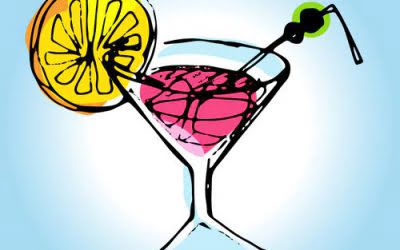The current systematic review and meta‐analysis had planned to examine the prevalence of alcohol use among those with and without a CMD from different SES backgrounds; however, studies included in this review did not report adequate information. Instead, studies generally reported the overall SES characteristics of the total sample and did not provide the required data stratified by SES. is alcohol use disorder a mental illness A random‐effects meta‐analysis was conducted to examine the global associations of AUD (e.g. mild, moderate or severe AUD) and any CMD. Many people with AUD do recover, but setbacks are common among people in treatment.
What is unhealthy drinking?
Our findings could aid clinicians and health systems in implementing more robust screening, assessment, and targeted‐intervention approaches in limiting alcohol use for these particularly vulnerable subgroups in primary care settings. Severe mental disorders frequently are complicated by comorbid disorders, such as medical illnesses, mental retardation, and AOD abuse. Co-occurring AOD-use disorders represent the most frequent and clinically most significant comorbidity among mentally ill patients, and alcohol is the most commonly abused drug (Cuffel 1996).
- Given these facts, it seems that the relationship between alcohol and mental health is bi-directional, meaning alcohol can worsen mental health, and mental health disorders can worsen alcohol misuse 1.
- This broad category of alcohol consumption comprises a continuum of drinking habits including at-risk drinking, binge drinking, and AUD.
- People often ask, “Is alcoholism a mental illness?” Learn the answer to this question, and information about the mental health effects of alcohol.
- Explore the NIMH grant application process, including how to write your grant, how to submit your grant, and how the review process works.
- As more people understand this connection, individuals will likely seek help and achieve long-term recovery.
Study selection
Schematic representation of a diagnostic algorithm for evaluating psychiatric complaints in patients for whom alcoholism may be a contributing factor. The algorithm helps the clinician decide if the compliants represent alcohol-induced symptoms, or an alcohol-induced syndrome that will resolve with abstinence, or an independent psychiatric disorder that requires treatment. A review of the patient’s medical records is another potentially rich source of information.
Co-occurring mental health conditions

These people resided predominantly in their communities rather than in hospitals; they received few vocational, recreational, and social opportunities but experienced regular exposure and ready access to AOD’s. As a result, the rates of diagnosed AOD-use disorders in mental health settings have continued to rise. In addition, clinicians have become more aware of the high prevalence of AOD-use disorders and more skilled at identifying them (Cuffel 1996). People with this condition can’t stop drinking, even if their alcohol use upends their lives and the lives of those around them. While people with this condition may start drinking again, studies show that with treatment, most people are able to reduce how much https://turmedpharmaceuticals.in/2024/10/11/what-does-it-feel-like-to-be-drunk-levels-of-being-5/ they drink or stop drinking entirely.
- Almost always, people feel nervous or defensive about their drinking, which is one reason this very common problem so often goes undetected or unaddressed.
- It can be challenging to cope with problems related to alcohol and mental health, but recovery is possible.
- A random‐effects meta‐analysis was conducted to examine the global associations of AUD (e.g. mild, moderate or severe AUD) and any CMD.
- Alcohol misuse can worsen schizophrenia symptoms, and in some cases, alcohol withdrawal can cause symptoms that mimic those seen with schizophrenia 1.
Federal resources on treatment

First, by establishing how patterns of alcohol use relate to psychiatric symptoms and their time course, a clinician obtains additional information that can be used in the longitudinal evaluation of the patient’s psychiatric and alcohol problems, as described later. Second, by defining the role alcohol use plays in a patient’s psychiatric complaints, the clinician is starting to Twelve-step program confront the patient’s denial, which is the patient’s defense mechanism for avoiding conscious analysis of the association between drinking and other symptoms. Third, by knowing that the clinician will be talking to a family member, the patient may be more likely to offer more accurate information. Fourth, if the patient observes that the clinician is interested enough in the case to contact family members, this may help establish a more trustful therapeutic relationship. Fifth, by involving family members early in the course of treatment, the clinician begins to lay the groundwork toward establishing a supporting network that will become an important part of the patient’s recovery program.
